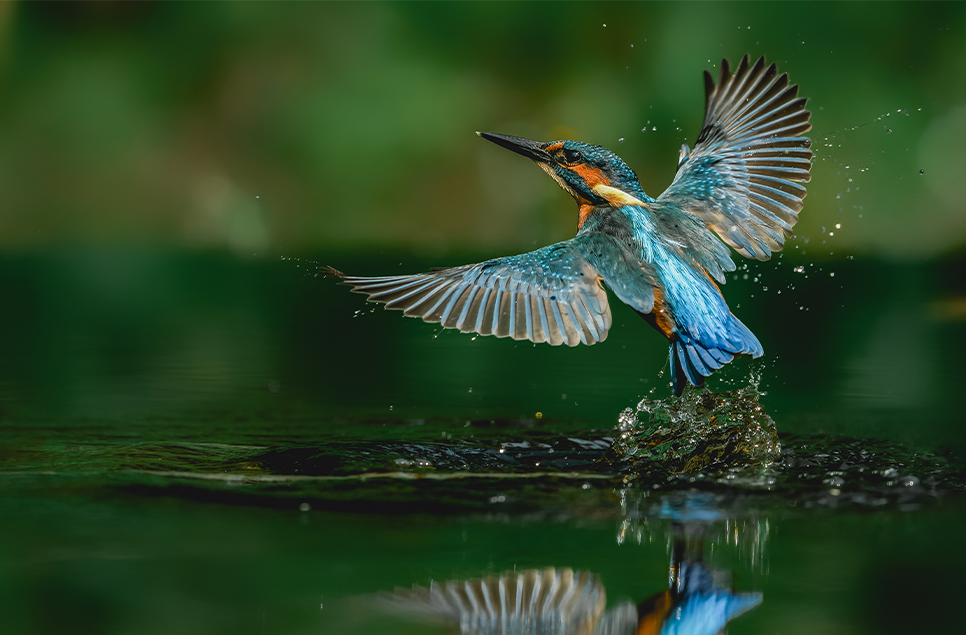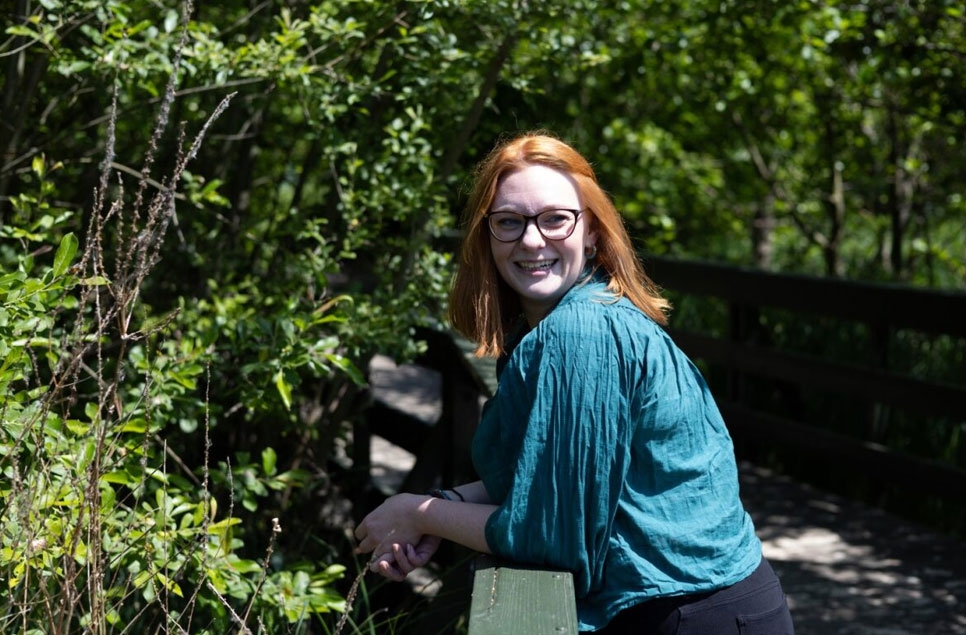Your audio guide to winter wetland bird calls
Winter is the time of year that our wetlands in the UK fill up with unfamiliar waterbird sounds. You might recognise the common mallard, but would you sound out a pintail? Our audio guide to winter wetland birds is here to help.
The crisp and clear mornings, spectacular sunsets and huge amounts of waterbirds on display make winter in wetlands a magical experience.
It’s the perfect time to see these birds, but how much attention have you paid in the past to the sounds they make? The honks, whistles, squeaks and quacks make up a whole other world of winter wildlife to enjoy. Listen carefully to the sounds below and see what you can hear next time you’re in a wetland.
Mute swan
A year-round wetland acquaintance, these huge, regal birds aren’t as silent as the name suggests. You can often hear them snort very loudly and if you get too close, they’ll hiss at you! If you ever spot swans in flight but don’t know what species they are, the mute is the only species that makes a throbbing whistle with each wingbeat.
Listen to a mute swan
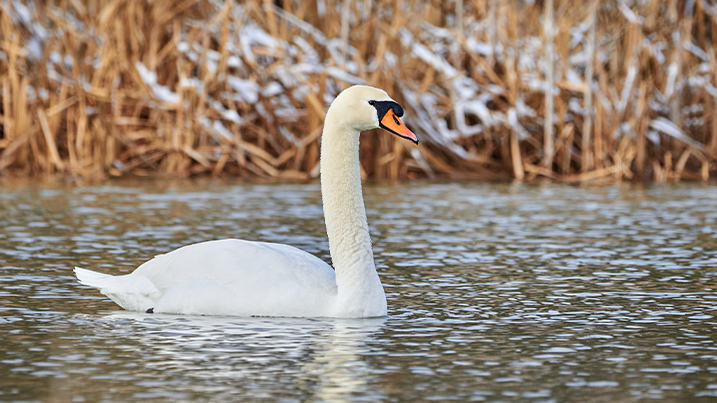
Audio credit: Bram Vogels and Xeno Canto
Whooper swan
Arriving in UK wetlands during October and November from Iceland, Scandinavia and Russia for the winter, this is the larger and noisier of the yellow-billed swans. They can often be heard loudly bugling in their family groups and also in flight. Notes are given in threes and fours.
Listen to a whooper swan
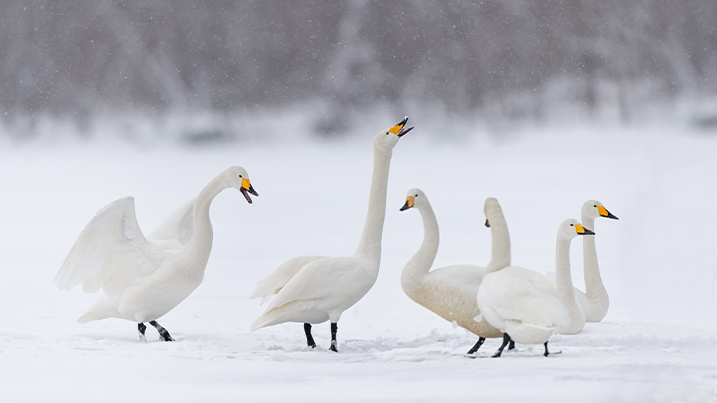
Audio credit: Micha Luhn and Xeno Canto
Bewick's swan
Slightly smaller and daintier than the whooper, the numbers of these birds wintering in the UK is falling dramatically. They are less of a full-on bugler compared to the whooper, with shorter, sharper, higher-pitched notes, often including an up and down inflection. Notes are given singly or in twos.
Listen to a Bewick's swan
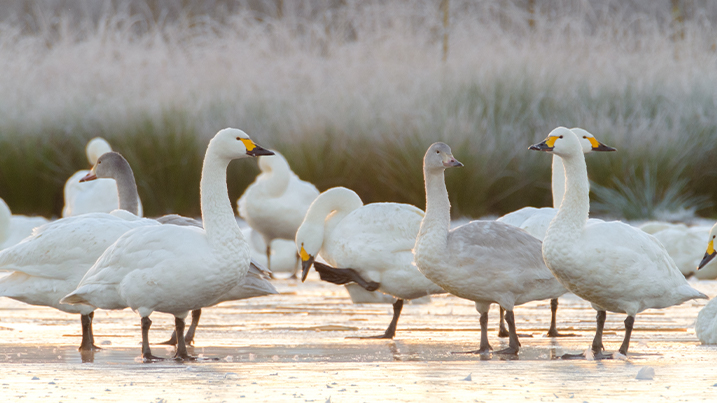
Audio credit: Rob Kirby
Pink-footed goose
This noisy goose arrives from Iceland in the autumn and often forms flocks many tens of thousands strong during the winter. ‘Skeins’ of them can be seen moving across skies in the north and east of the country and can be audible from quite some distance.
Listen to a pink-footed goose
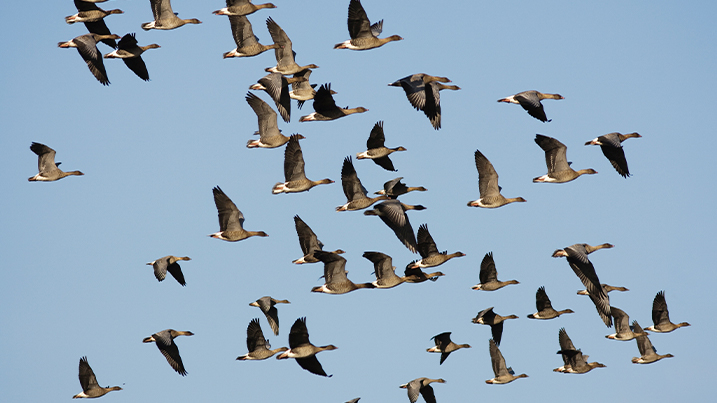
Audio credit: Simon Elliott and Xeno Canto
Greylag goose
They’re our only native breeding goose but numbers are supplemented during the winter from populations across northern Europe, escaping colder climes. Their nasal, loud cackling is recognisable to many of us due to its similarity to domestic geese; greylags are their direct ancestors.
Listen to a greylag goose
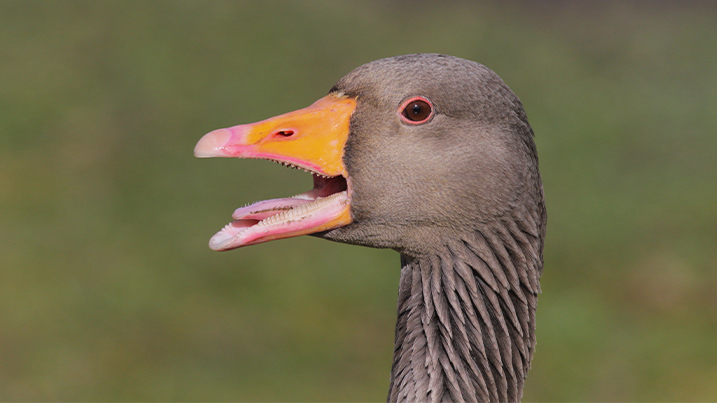
Audio credit: W. Agster and Xeno Canto
Barnacle goose
These black-and-white wonders mainly arrive from Svalbard in the autumn and winter on the Solway Firth. Come April, they’ll all have returned – this disappearance baffled our ancestors and led them to think that the geese turned into the similarly coloured goose barnacle, hence the name. You’ll hear their call as a short, sharp, single bark but when there are tens of thousands of them it becomes quite something!
Listen to a barnacle goose
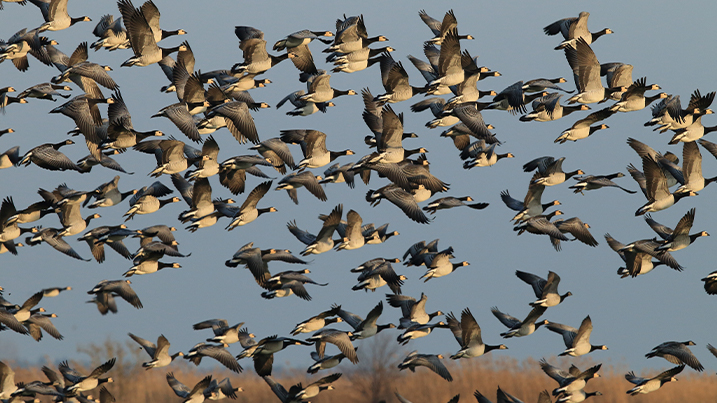
Audio credit: Hannu Varkki and Xeno Canto
Brent goose
We see two types of brent goose in the UK, the dark-bellied and the light-bellied. They come to us after breeding on coastal tundra, from Canada to Russia. You’ll hear them give more of a gargle than a cackle; these are quieter geese than those described above – but of course they can be quite loud when in a large flock.
Listen to a brent goose
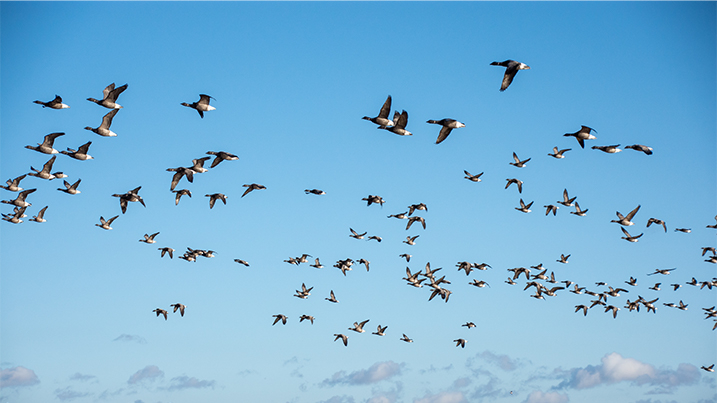
Audio credit: Arend Wassink and Xeno Canto
Mallard
Our most well-known of the ducks – they’re common breeders but like the greylag, their numbers are supplemented by northern breeders in the winter. You’ll likely be familiar with the quacks that sound somewhat like laughter – but did you know that this only comes from the female?
Listen to a mallard
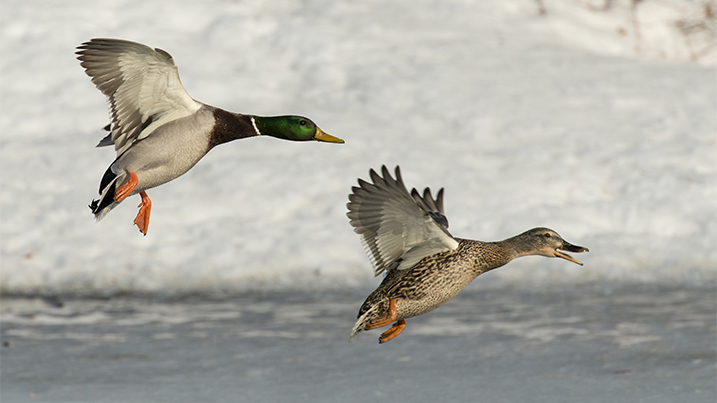
Audio credit: Alain Malengreau and Xeno Canto
Pintail
These slim and elegant winter visitors have delicate plumage and make just as delicate noises. If you can get up close to them, you’ll hear the male uttering a low whistling sound, whilst the female has a deep, stuttered, almost croaking quack.
Listen to a pintail
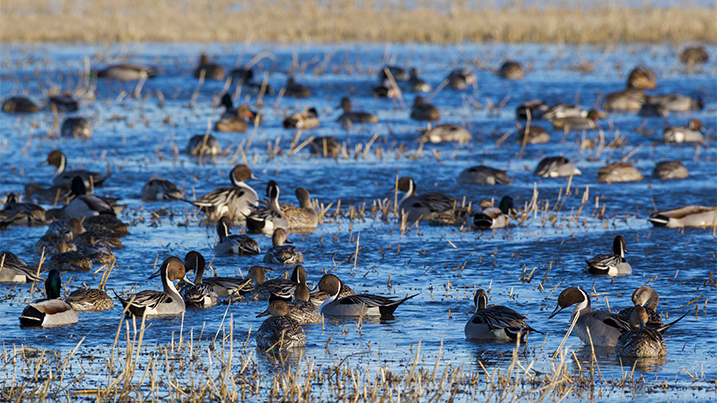
Audio credit: Alan Dalton and Xeno Canto
Wigeon
One of the greatest sights on a winter wetland is a grazing carpet of wigeon – during the day, the birds will walk out of the water and feed on grass or arable fields. If disturbed, they will all take flight at once, back to the safety of the water. You won’t be able to miss the drake’s ‘weeooo!’ song.
Listen to a wigeon
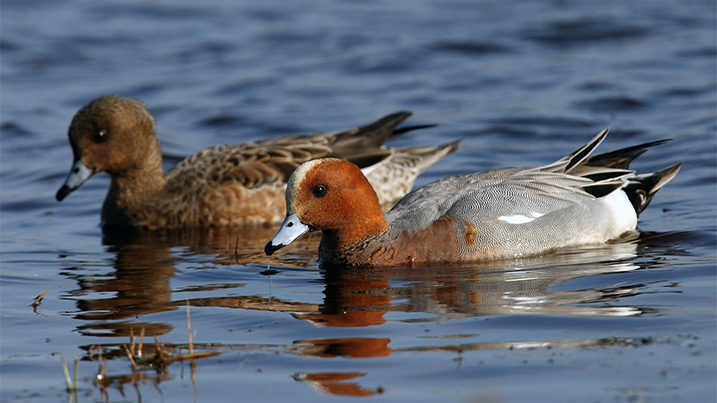
Audio credit: Simon Elliott and Xeno Canto
Grey heron
You’ll likely be familiar with these large, grey birds patrolling the water’s edge, watching for their prey. Have you ever heard them call? As they take flight, they will occasionally let out a great ‘kwark!’ – it’s not a pretty noise, but it sure makes the bird’s presence known.
Listen to a grey heron
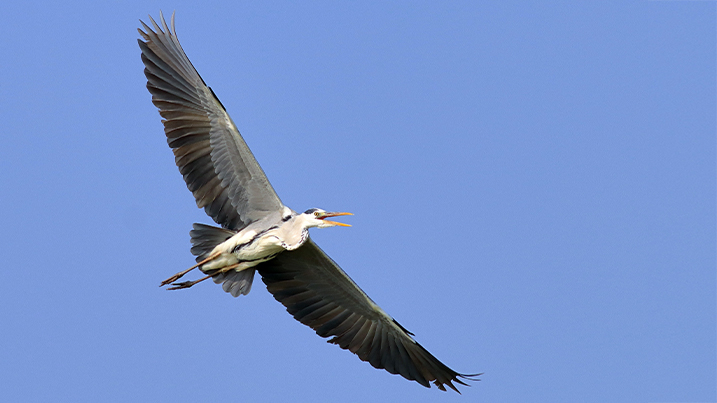
Audio credit: Lars Edenius and Xeno Canto
Water rail
Spotting a water rail can be tricky and often it’s simply a case of right place, right time. However, you’re in with a good chance of hearing one. Their most commonly heard noise is a loud, angry, pig-like squeal, exploding from the depths of the reed bed. Once you know they are in the area, it’s just a matter of spending time staring at the reed edges for one to emerge…
Listen to a water rail
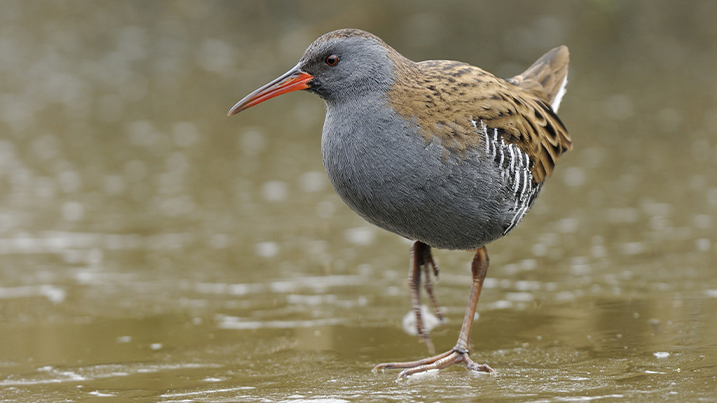
Audio credit: Stanislas Wroza and Xeno Canto
Lapwing
The rounded wings, the flappy flight-action, the flicker-effect of black and white; a large winter flock of lapwing is a sight to behold. Calling birds makes the experience even more special as their almost electric, shrill shrieks fill the air.
Listen to a lapwing
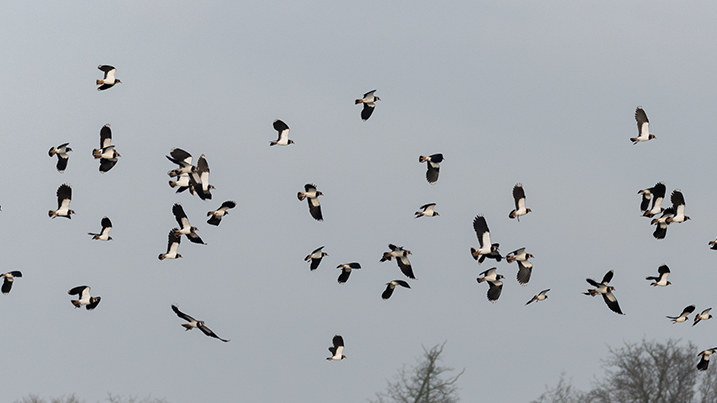
Audio credit: Rob Kirby
Greenshank
More common on autumn migration, a few of these elegant waders will winter in the UK, most often in the south of the country. It’s easy enough to know when they are around; their ‘choo-choo-choo’ flight call echoes around the wetland.
Listen to a greenshank
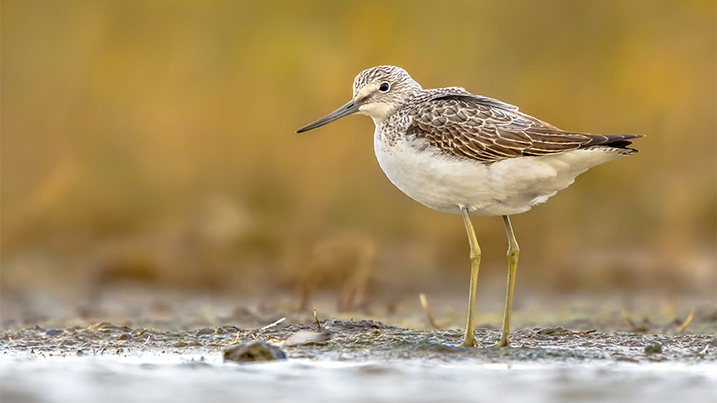
Audio credit: Domagoj Tomicic and Xeno Canto
Curlew
Our largest wader breeds on upland and farmland during the summer months but come the autumn, they flock to lowland wetlands to spend the winter. Their almost onomatopoeic call ‘cur-li’ heard across a misty morning landscape is as memorable as it is spine-tingling; a haunting sound that once heard, you won’t forget.
Listen to a curlew
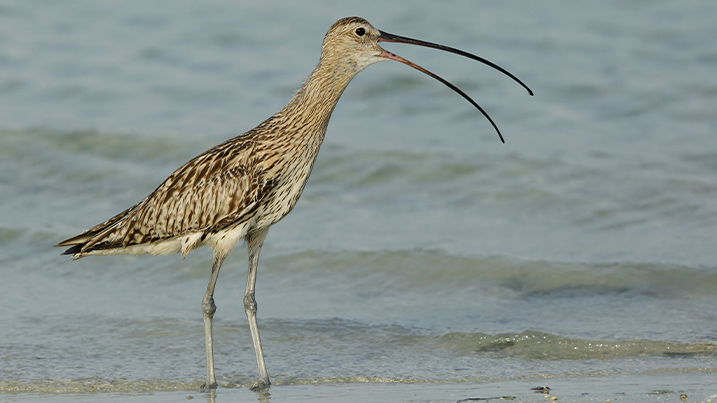
Audio credit: Bart Gras and Xeno Canto
Bearded reedling
These moustachioed reedbed-dwellers can be heard ‘pinging’ as they flit in groups across their habitat. As they prepare to migrate south, flocks might be spotted ‘erupting’ from their breeding area, calling excitedly. They’re similar in looks to the tits, but they are actually more closely related to the larks.
Listen to a bearded reedling
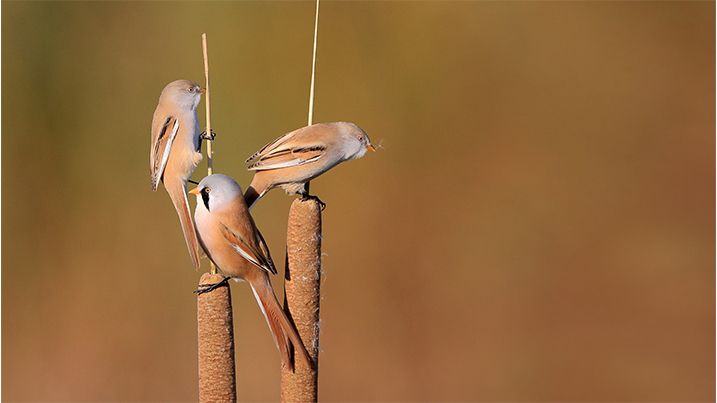
Audio credit: Baltasar Pinheiro and Xeno Canto
Visit a wetland
Now you've learned the soundtrack to winter in wetlands, why not test out your new knowledge in real life? Head down to your nearest wetland site and soak up the sounds.
Plan your visit